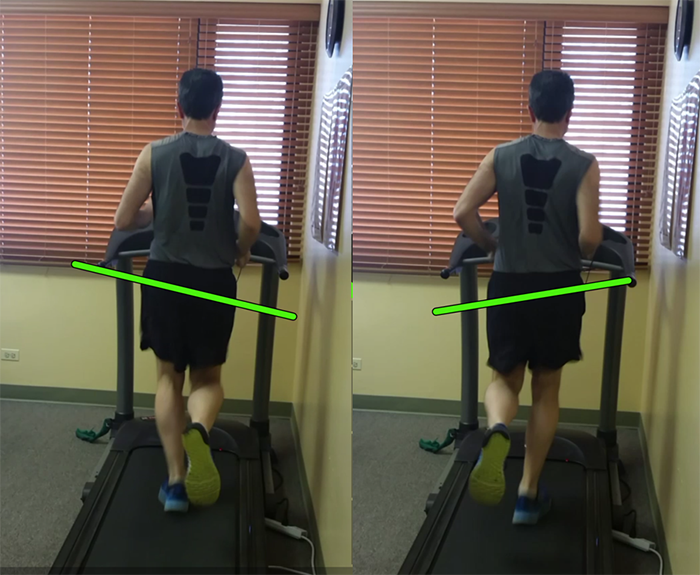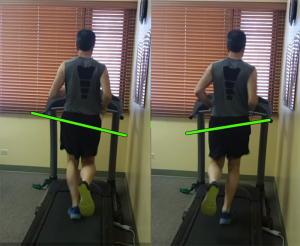It’s impossible to see the nuances of running with the naked eye, so it’s important to videotape your running and watch it in slow motion. I use an app you can download on your phone, which makes it easy to grab a running buddy and videotape each other.
Over the years, I’ve seen Carney with various injuries. He is an amazing 65+ age group triathlete who recently tore his left calf muscle. He quickly overcame his injury by abstaining from running and faithfully doing his physical therapy exercises. In 6 short weeks, he was ready to hit the ground running. But, before he jumped back into his regular training routine, we videotaped his running at various speeds (his typical training paces) to see if he had any issues at the faster paces. Overall, at all 3 speeds his basic running form looked good.
What does ‘good running form’ look like?
- Running tall and looking straight ahead
- Engaging the core/lower abdominals (Watch this video to see how to engage your abs)
- Swinging your arms at 90 degrees, close to body, driving elbows back, but not crossing your body
- Foot strikes landing close to your body
- Knees pointing straight ahead
- Ankles leaning slightly
- Cadence around 172-185 steps/minute
Carney had great running form, but when we looked beyond the basics we found some issues.
Looking Beyond the Basics
For runners, it’s important to look beyond the basics of good running form to identify issues such as muscle imbalances or weaknesses, decreased joint mobility or loss of movement, and neuromuscular timing issues. In Carney’s case, here’s what I found:
- At a 10 min pace, no significant issues
- At a 8:30 pace, a mild right hip drop
- At a 8:00 pace, an increasing right hip drop
What does this indicate?
When the right hip drops greater than the left hip drop, it indicates a weakness of the left glute and decreased neuromuscular control between his left foot and left glute. In other words, Carney’s left foot wasn’t working with his left glute efficiently.
Correcting Your Running Form
To correct this, Carney was instructed to run no faster than a 10-minute pace for the next 3-4 weeks. He was also given exercises to integrate his left foot/calf and left glute. He also worked with his tri coach to continue strengthening his left leg.
Carney returned to see me 6 weeks later and we videotaped him again at all 3 speeds and — Voila! His right hip drop decreases, thus improving his left glute strength and integration of his left foot and left glute. He was then able to run safely at the 8:30 pace for short periods and gradually worked up to longer runs at faster paces.
The Moral of the Story
Having your running analyzed by a physical therapist will help you identify and correct those little nuances that can keep you healthy throughout the race season. If you’re determined to stay healthy this season, come in a see me! I’d love to see you run.








Leave a Reply